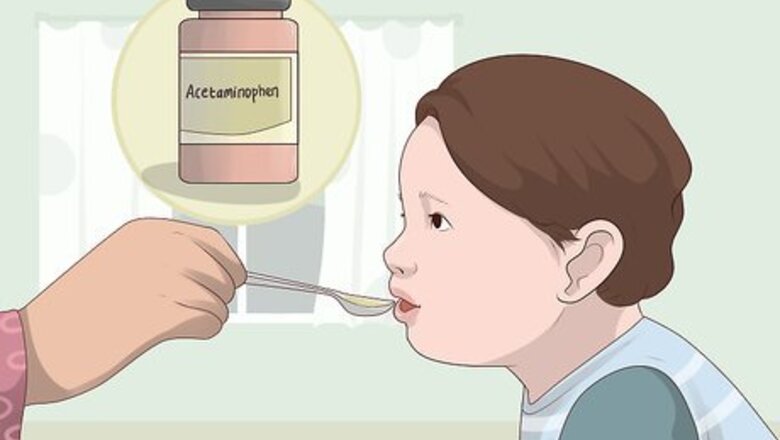
views
Relieving Your Toddler’s Symptoms
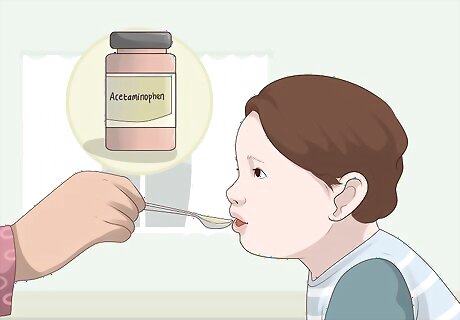
Give your toddler children’s acetaminophen (Tylenol) for pain and fever. Check the packaging to make sure you get the right over-the-counter product for your child’s age. A toddler who’s under 2 years old can take infant acetaminophen, while a toddler who’s over age 2 can take an oral suspension of acetaminophen. Read the label or talk to your pediatrician to get the right dosing for your child, then administer it exactly as directed. Talk to your doctor before giving your child any medications. The right dose of acetaminophen depends on your child’s weight. Talk to your child’s healthcare provider to determine the appropriate dose before giving them acetaminophen.Warning: Never give aspirin to your child. It can cause a rare condition called Reyes Syndrome, which can be life-threatening.
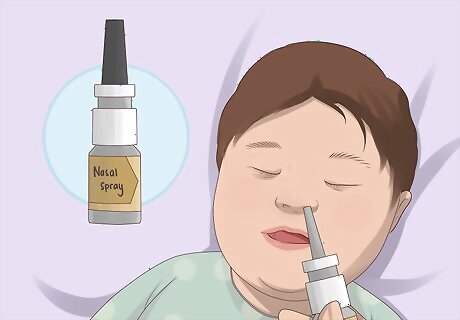
Use a nasal spray to loosen the mucus in your child’s nose. Choose an over-the-counter nasal spray that's labeled for children. These sprays are safe for toddlers. Read and follow the directions on the packaging. Then, spritz the nasal spray into your toddler’s nose to moisten and thin their mucus. Ask your doctor to recommend a nasal spray for your child. However, you don’t need to get a prescription. Nasal spray will help get rid of dry, flaky mucus that may be coating your child’s nose. Administer the nasal spray right before you help your child blow their nose.
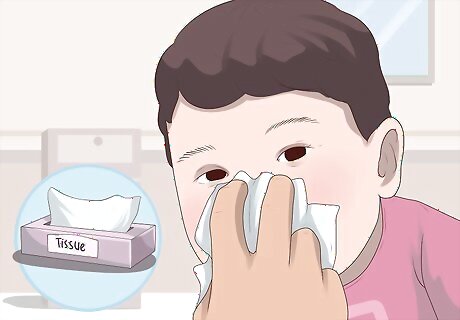
Ask your child to blow their nose into a tissue. Your child will likely have a runny nose and excess mucus. To help them clear their stuffy nose, hold a tissue in front of your toddler’s face and ask them to blow. Wipe their nose well to help keep their nostrils clear. Help your child blow their nose when they sound stuffed up or you see runny mucus. Use tissues that are soft so that the delicate skin around your child’s nose doesn’t get as irritated.Variation: If your child can’t blow their nose, use a bulb syringe to suck the mucus out. Squeeze the bulb, then stick the end of the syringe into your toddler’s nostril. Slowly release the bulb to draw the mucus into the syringe. Remove the bulb syringe and repeat as needed.
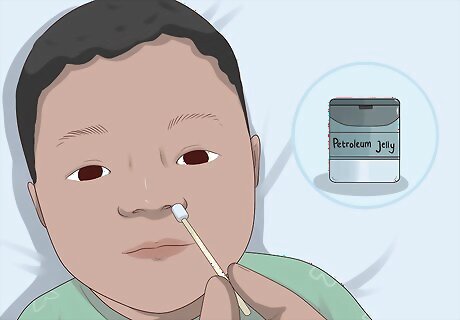
Apply petroleum jelly to your child’s nose to soothe dry skin. The skin around your toddler’s nostrils will likely get really dry and irritated, especially if you’re wiping their nose often. This can make your child really uncomfortable, but petroleum jelly can help. Use your fingertip or a cotton swab to swipe a thin layer of petroleum jelly onto the area around your child’s nose to soothe their dry skin. Petroleum jelly is typically the best option because it won’t irritate your child’s skin or lungs. Lotion might burn or sting, and products with fragrances might trigger coughing.
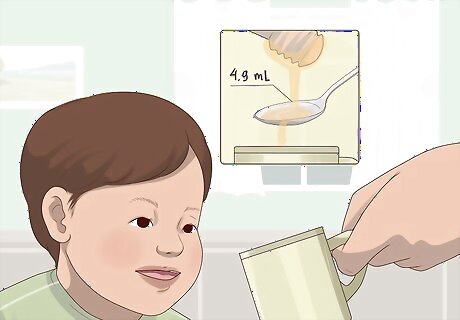
Give your toddler 1 tsp (4.9 mL) of honey to relieve a cough. Honey is a natural cough reliever, which might be better than cough medicine. Since cough medicine isn’t safe for toddlers, honey is your best option for treating a cough. Offer your child honey straight from a spoon or mix it into a cup of warm water. Don’t give your toddler hot beverages, like tea, because it might burn their mouth. However, you can give them comfortably warm beverages, which will help soothe their throat and clear out their nasal passages. It’s best to avoid giving a toddler black tea since it contains caffeine. However, you can give them caffeine-free herbal teas, such as chamomile. Avoid giving chamomile tea to your toddler if they are allergic to ragweed.Warning: Never give honey to a baby who’s under 1 year old. It can cause a condition called infant botulism in babies. However, it’s safe for toddlers over 1 year old.
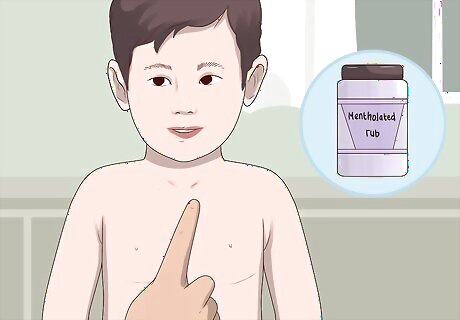
Apply mentholated rub to your toddler if they’re at least 2 years old. Menthol helps relieve a cough, eases breathing, and soothes a sore throat. Read and follow the instructions on your product label. Then, use your fingertips to apply a thin layer of mentholated rub to your child’s chest. Keep this product in a cabinet where your child can’t reach it. Reapply the mentholated rub as directed on the label until your child starts to feel better.
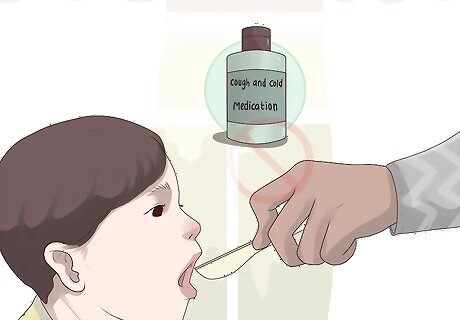
Avoid giving your child cough or cold medication. Cough and cold medications aren’t considered safe for toddlers. Don’t give your child any cough or cold medications. Talk to your doctor if you think your child needs more treatment. They can help you get safe treatments for your toddler. It’s really easy for a toddler to overdose on cough and cold medications. In some cases, your doctor might recommend you give your child a small amount of cough or cold medication. If this happens, follow their instructions exactly to help your child get better.
Keeping Your Child Comfortable
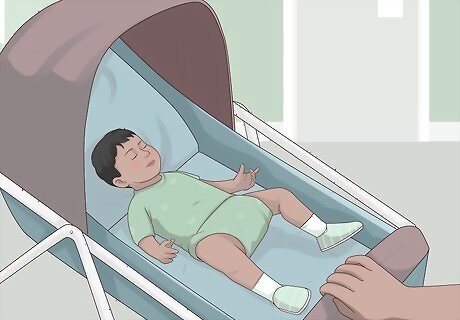
Help your child rest so they can recover. Your child needs to rest so their body can heal. Make your child comfortable with soft bedding and pillows. Encourage them to nap, and entertain them when they’re awake so they don’t get restless. This can help them get better faster. For instance, offer your child a coloring book, turn on their favorite movie, play a game with them, or give them a toy they can play with while lying down. Change your toddler’s sheets and pillowcases right away if they get soiled, so that you can keep your child’s bed dry and comfortable.
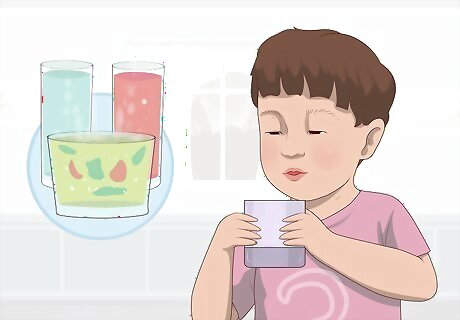
Give your child extra fluids to keep them hydrated. Provide water, juice, and soup to help hydrate your child and thin out their mucus. Additionally, offer your child Pedialyte to restore their electrolytes if your doctor recommends it. This will help you toddler recover faster. Prompt your child to drink more fluids so they can stay hydrated. Give them warm, broth-based soups for lunch and/or dinner.
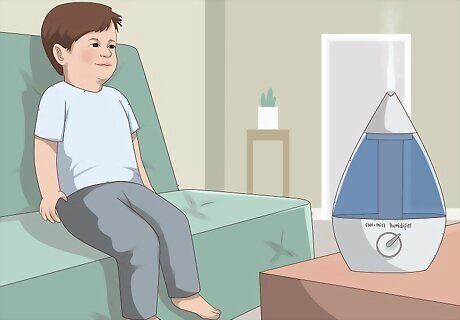
Use a cool-mist humidifier to add moisture to the air. Dry air can irritate your child’s throat and airways, which may worsen their sore throat or cough. Additionally, it might dry out their mucus, making it harder for them to clear it. Place a cool-mist humidifier in the room where your child is resting. This will moisten the air and soothe your toddler’s airways. The humidifier may help relieve a cough or congestion. It’s best to use a cool-mist humidifier because it reduces the risk of your child getting burnt or injured. They may touch or knock over the appliance, and a hot humidifier will hurt them. You can also keep the air in the room clean and free of irritants with a HEPA filter.
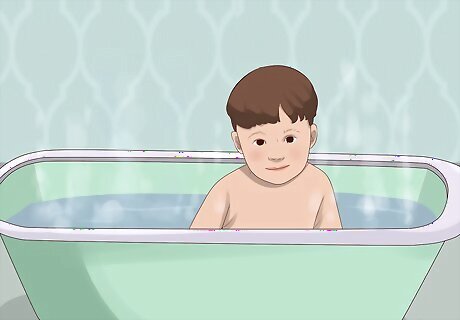
Give your child a warm bath if they’re feeling achy. Your toddler may experience some body aches or discomfort. Help them feel better by giving them a warm bath. Run a comfortable bath, then stay with your child while they’re in the water. Use a rag or cup to run the water over their body. Never leave your child unattended while they’re in or around water.Variation: You can use a warm compress to relieve your toddler’s discomfort or body aches. Apply the warm compress for 15-20 minutes at a time, and stay with your child so you can make sure they’re safe.
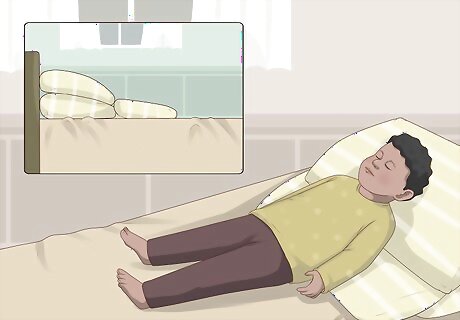
Elevate your child’s upper body to relieve coughing when they lie down. For children under age 2, place pillows or blankets under the upper part of their mattress to raise their upper body. If your child is over age 2, pile the pillows under their back to prop them up. This will help your toddler breathe more easily and cough less. If you have a wedge pillow, it’s safe for toddlers 2 years old and over to use it. Don’t let children under 2 lie on a pile of pillows.
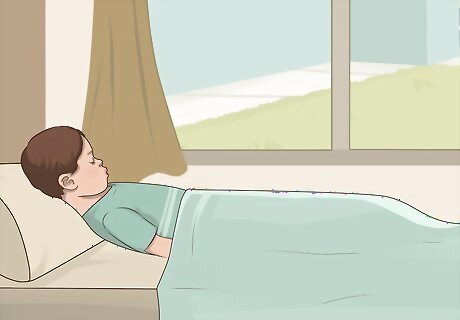
Keep your child at home until their fever goes away. Going outside likely won’t make your child’s cold worse. However, they’re likely contagious if they have a fever. Don’t take your child out of the house until their fever is gone. This will limit the chance of spreading the infection. For instance, don’t send your child to daycare because they might transmit the cold germs to other children.
Seeking Medical Care
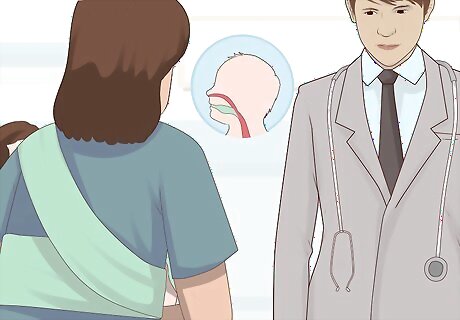
Go to the doctor if your child is wheezing or struggling to breathe. Try not to worry, but breathing issues can become a serious symptom. Normally, a cold won’t cause breathing problems for your toddler. If your child is wheezing or can’t breathe, they might have a condition like asthma or their cold might be serious. Visit the doctor to make sure your child gets prompt treatment so they can breathe easier. Tell your doctor if you have concerns about asthma or breathing trouble. This will help them make a better diagnosis. Call your doctor or get medical help right away if you notice stridor, which is a high-pitched whistling or wheezing sound, when your toddler breathes.
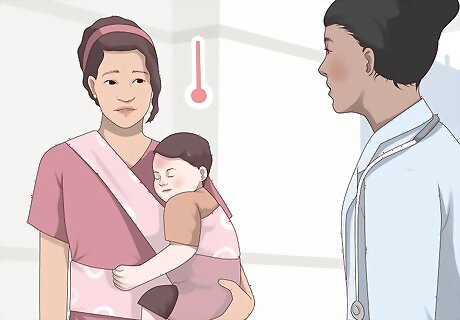
Take your toddler to the doctor if their symptoms worsen after 3 days. While you don’t need to worry, it’s possible that your child has a more serious illness, such as strep throat, sinusitis, bronchitis, or pneumonia. Go to the doctor if your child’s symptoms worsen or they have the following severe symptoms: Fever of 101 °F (38 °C) or higher that lasts longer than a day Fever of 103 °F (39 °C) for any length of time Cough with a lot of mucus Extreme lethargy Inability to keep down food or fluids Severe throat pain Headache, chest pain, or stomach pain Earache Swollen glands A muffled voice
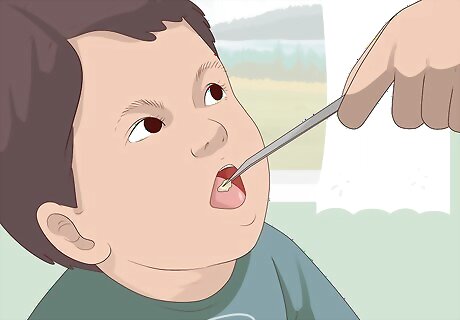
Allow your doctor to take a throat swab to make a diagnosis. Your doctor can typically diagnose a cold based on your child’s symptoms. However, they’ll likely do a throat swab to rule out other conditions if your child has serious symptoms. Let your doctor take a quick swab so they can test it for illnesses like strep throat and flu. A throat swab is easy and painless, but it can cause minor discomfort. Generally, your doctor will test the throat swab in their office to help them make the right diagnosis.
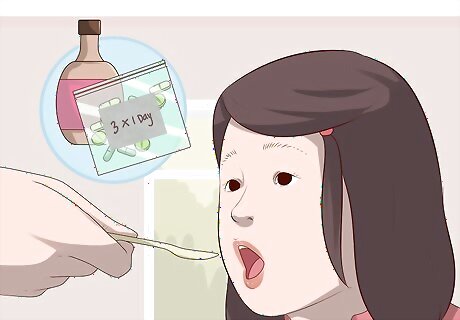
Follow all of your doctor’s treatment advice to help your child heal. Once your doctor makes a diagnosis, they may prescribe medication, either to treat the disease itself or control the symptoms. However, it’s also possible that they’ll tell you to help your child relax while they recover. Take your doctor’s advice and follow their treatment instructions exactly. If your doctor prescribes a medication, use it exactly as directed. If they offer your child an antibiotic to treat a secondary bacterial infection, give your toddler their entire course of antibiotics, even if they start to feel better before the medication is gone. Call your doctor if your toddler develops new symptoms or doesn’t improve after a few days.















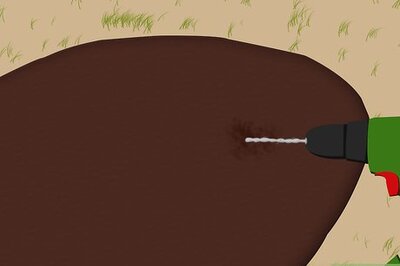



Comments
0 comment